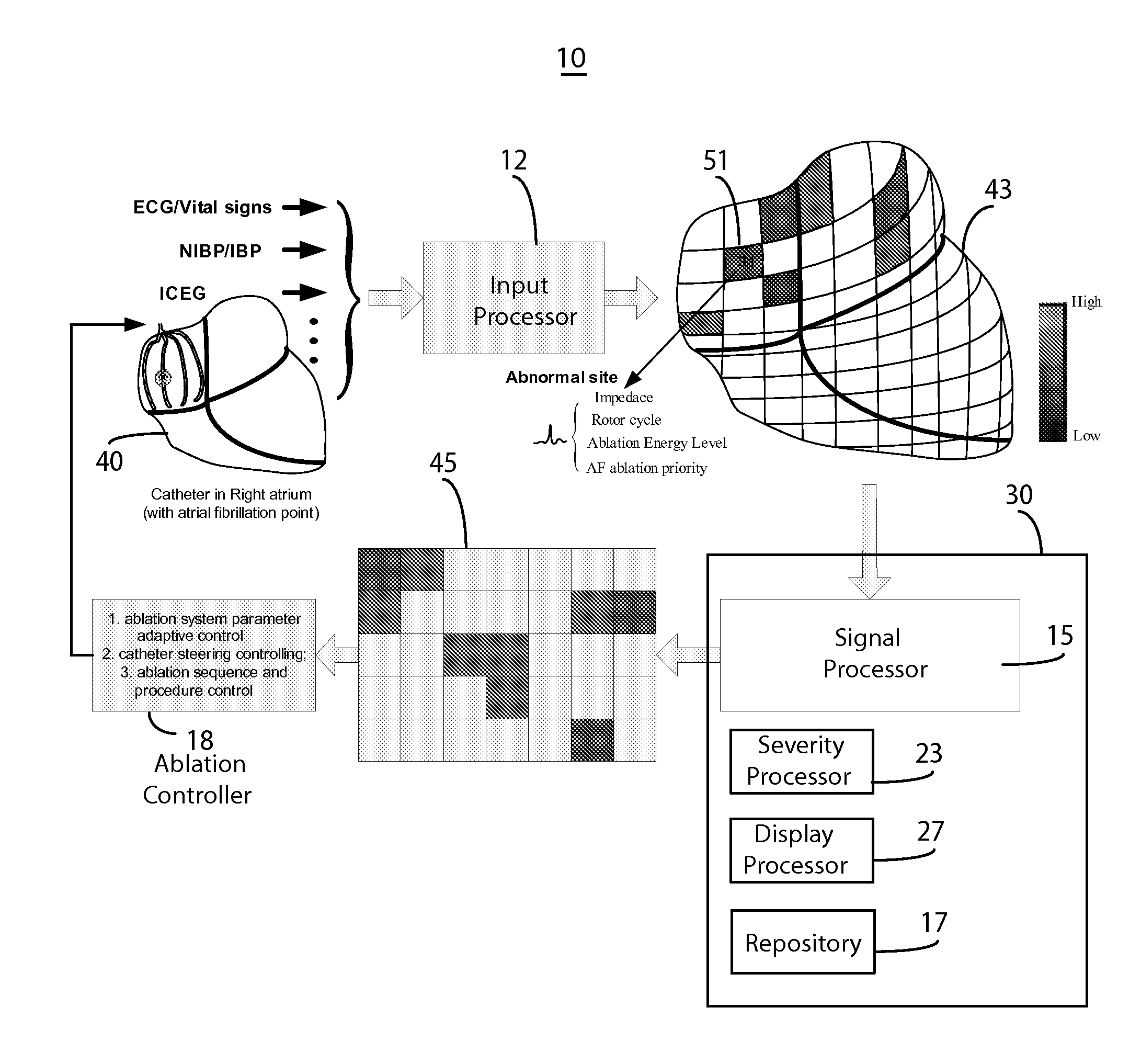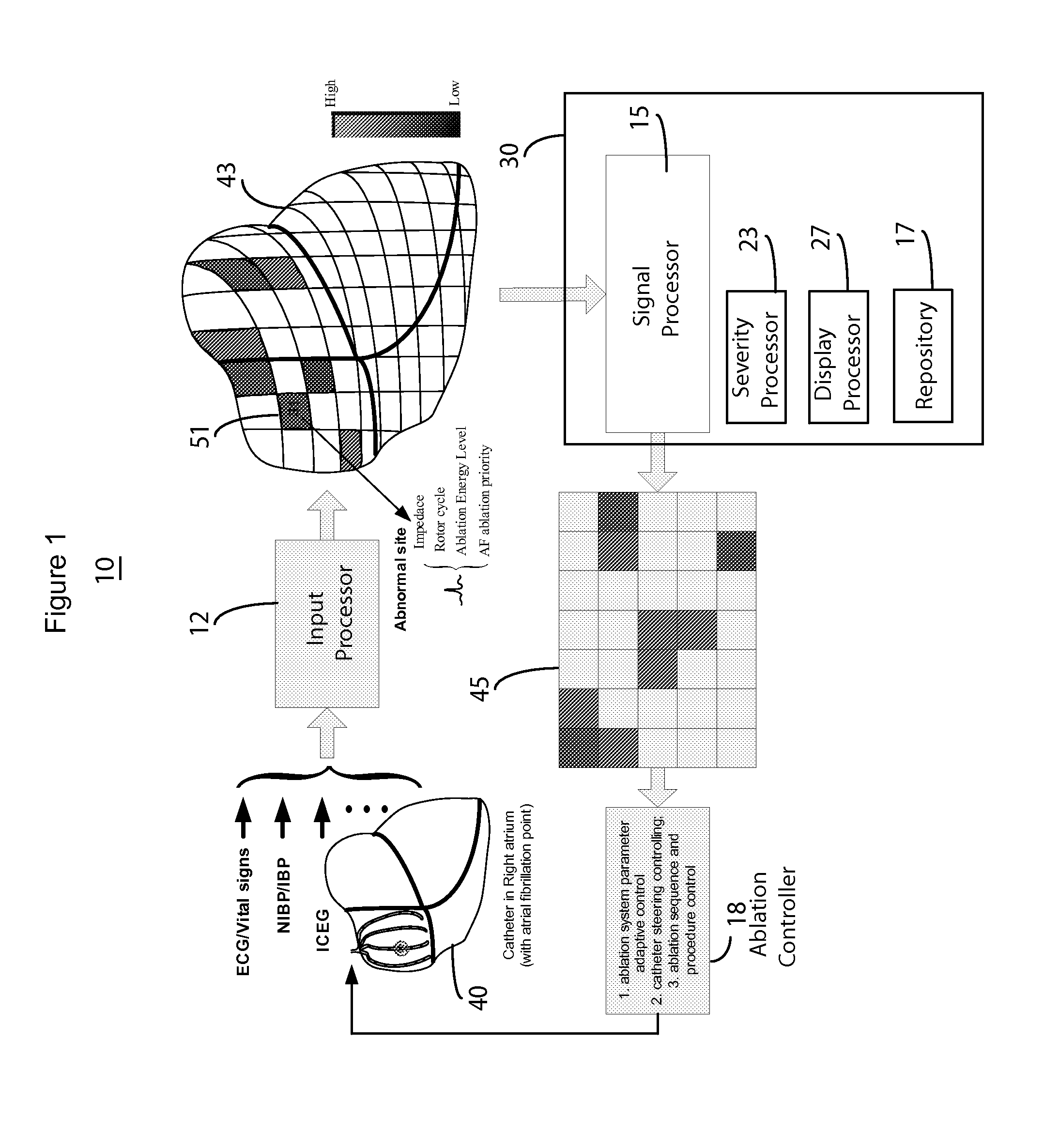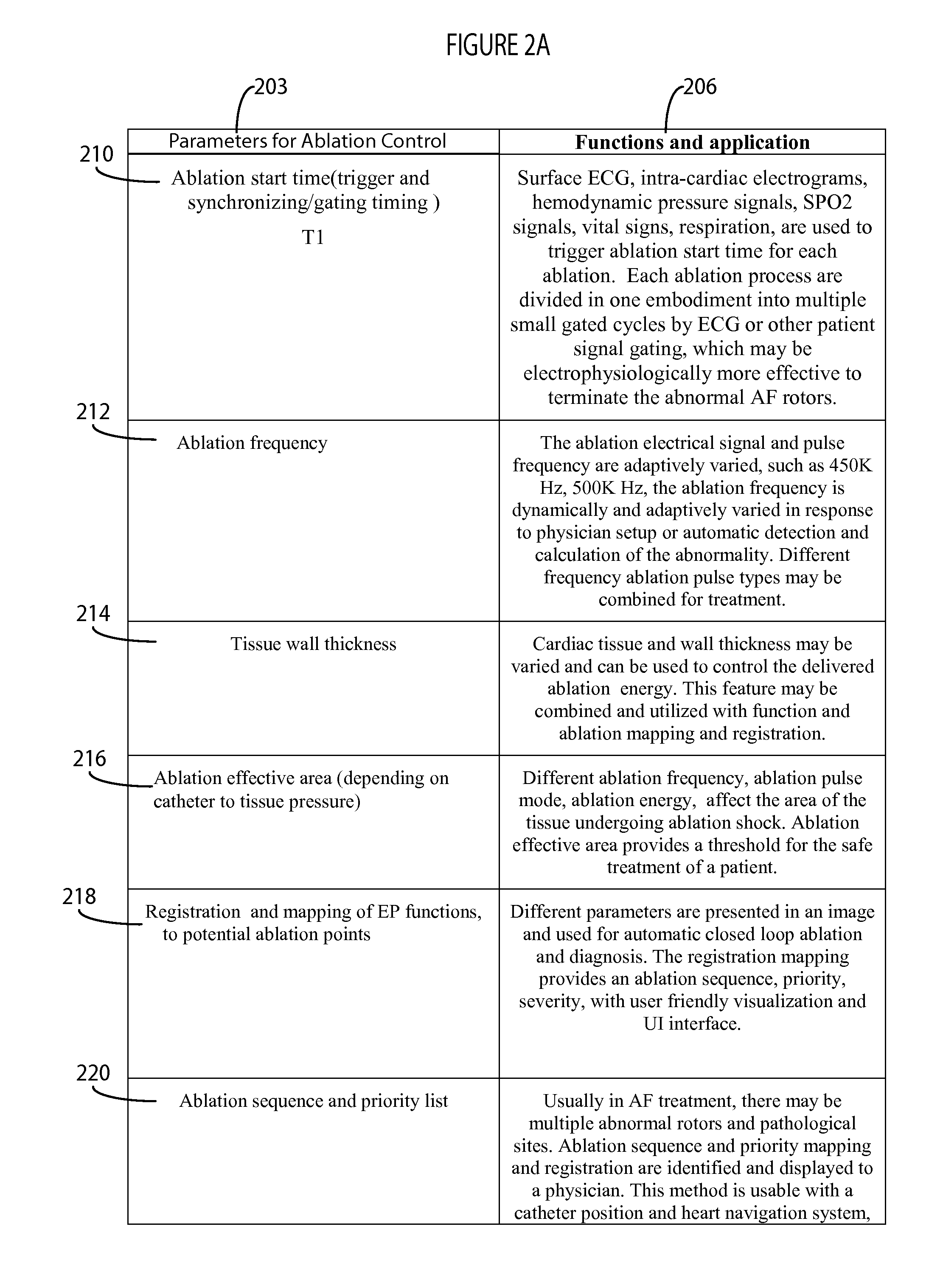System for Automatic Medical Ablation Control
- Summary
- Abstract
- Description
- Claims
- Application Information
AI Technical Summary
Benefits of technology
Problems solved by technology
Method used
Image
Examples
Embodiment Construction
[0016]A system improves analysis and interpretation of cardiac atrial electrophysiological activities for atrial pathology diagnosis and treatment, by detecting and characterizing atrial signals (including surface ECG signals, intra-cardiac electrograms, invasive or non-invasive atrial hemodynamic signals) in response to an atrial gating signal derived from a P wave signal or atrial function portion. The gating or synchronization signal is derived by electrical or feedback-loop control based on cardiac measurements and derived parameters from ECG signals, hemodynamic pressure signals, SPO2 signals including P wave start time, P wave peak time, dP / dt (rate of pressure change), frequency and energy waveform peak time. The system is utilized to identify, quantify and map signal waveform changes and distortions within atrial function signals with registration of anatomical cardiac tissue and characterizes atrial multi-rotor (multi-excitation) signal patterns and determines ablation trea...
PUM
 Login to View More
Login to View More Abstract
Description
Claims
Application Information
 Login to View More
Login to View More - R&D
- Intellectual Property
- Life Sciences
- Materials
- Tech Scout
- Unparalleled Data Quality
- Higher Quality Content
- 60% Fewer Hallucinations
Browse by: Latest US Patents, China's latest patents, Technical Efficacy Thesaurus, Application Domain, Technology Topic, Popular Technical Reports.
© 2025 PatSnap. All rights reserved.Legal|Privacy policy|Modern Slavery Act Transparency Statement|Sitemap|About US| Contact US: help@patsnap.com



